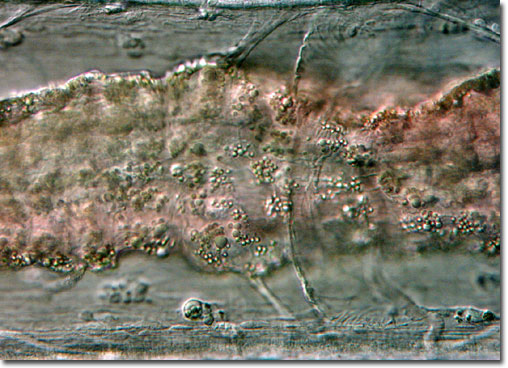|
Tubifex worms are capable of thriving in oxygen-poor environments, such as sewage treatment ponds, because they possess a much more efficient manner of assimilating dissolved oxygen than most other organisms. The worms, which generally range in length from 1 to 8.5 centimeters, reside in mud tubes that they create out of a mixture of mud and mucus. However, they often leave their posterior segments outside of the tubes, waving them about and creating a current that enables them to collect any surrounding trace amounts of dissolved oxygen.
|
